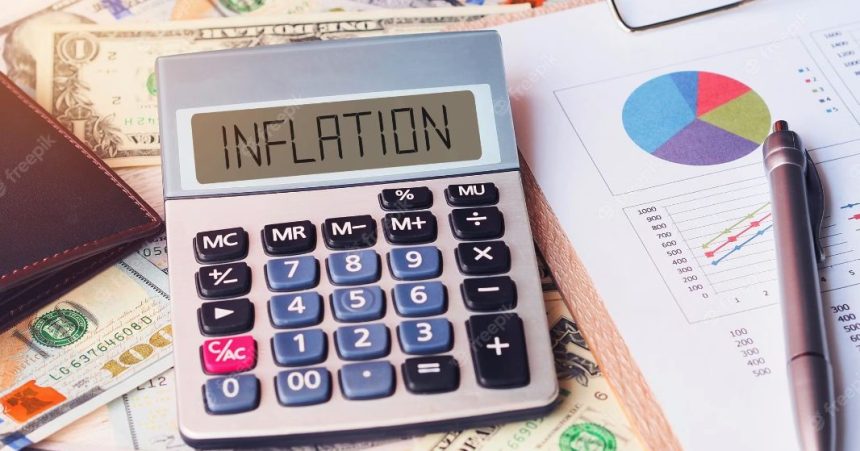Inflation, a term that has been making headlines recently, has been a cause for concern among small businesses in the United States. As the cost of goods and services rises, small business owners are facing challenges in hiring qualified workers and maintaining optimism about future business conditions. In this article, we will delve into the effect of inflation on small businesses, examine the current economic landscape, and explore the potential outcomes for the US economy.
The Small Business Struggle
According to a survey conducted by the National Federation of Independent Business (NFIB), small businesses in America experienced a decline in optimism in August. This decline interrupted a three-month streak of improving sentiment, with the August reading being the 20th consecutive month below the 49-year average. Moreover, expectations of better business conditions over the next six months deteriorated, further dampening the outlook for small businesses.
One of the biggest challenges faced by small business owners is the difficulty in finding qualified workers. The survey revealed that 40% of small business owners reported having job openings that were hard to fill. Although this figure was slightly lower than the previous month, it remains historically high. Bill Dunkelberg, the NFIB’s chief economist, emphasized that the worker shortage, coupled with inflation, continues to be the biggest obstacle for Main Street.
A Weaker Economy and the Impact of Inflation
In recent months, inflation has shown signs of slowing down as the Federal Reserve aggressively raised interest rates. This move was aimed at curbing inflation, and it appears to have had some effect. The US economy, despite the rapid rate hikes, has remained on strong footing, with consumer spending and retail sales showing positive growth in July.
However, American consumers face several economic obstacles this year that could impact the economy. These include the resumption of student loan payments, dwindling savings accounts, a tougher time accessing new credit, and another expected interest rate hike. The Federal Reserve’s “Beige Book” report, which collects survey responses from businesses across the country, indicates that many firms are preparing for weaker consumption in the coming months. This could particularly affect in-person experiences that Americans splurged on after pandemic-era shutdowns.
While it remains uncertain how much these factors will weigh on the US consumer, some economists believe that a sharp downturn is unlikely. In fact, Goldman Sachs recently reduced its bet on a US recession, citing the economy’s surprising resilience. This optimism is also based on the hope that the Federal Reserve can achieve a soft landing, where inflation slows to the target rate of 2% without a significant increase in unemployment.
The Road Ahead: Navigating Inflation and Economic Challenges
As the battle against inflation continues, the Federal Reserve must remain vigilant. Simona Mocuta, chair of the American Bankers Association’s Economic Advisory Committee, emphasizes that while the odds of a soft landing look better today than six months ago, there is still work to be done. It is crucial to find a balance between supply and demand across various sectors, including goods, services, and labor markets, to aid the ongoing disinflation process.
Small business owners must also adapt to the changing economic landscape. To mitigate the impact of inflation and the worker shortage, they should consider innovative recruitment strategies, such as offering competitive wages and benefits to attract and retain qualified talent. Additionally, exploring cost-saving measures and optimizing operational efficiency can help offset the effects of rising prices.
While the current economic challenges may seem daunting, it is essential to stay informed and proactive. Monitoring key economic indicators, such as inflation rates and consumer spending patterns, can provide valuable insights into the state of the economy. By staying ahead of the curve and making informed decisions, small businesses can navigate the complexities of inflation and position themselves for success.
Frequently Asked Questions
Q: What is inflation? A: Inflation refers to the sustained increase in the general price level of goods and services over a period of time, resulting in a decrease in the purchasing power of money.
Q: How does inflation impact small businesses? A: Inflation can have several implications for small businesses. It can lead to higher costs of production, reduced profit margins, and increased difficulty in hiring and retaining qualified workers.
Q: What can small businesses do to mitigate the impact of inflation? A: Small businesses can consider strategies such as offering competitive wages, optimizing operational efficiency, exploring cost-saving measures, and closely monitoring key economic indicators to navigate the challenges posed by inflation.
Q: How can small businesses stay informed about economic trends and developments? A: Small business owners can stay informed by following reputable news sources, engaging with industry-specific publications, participating in professional networks, and seeking advice from financial advisors and industry experts.
Q: Is inflation always a negative phenomenon? A: While inflation can have negative effects, such as reduced purchasing power and increased costs, moderate inflation can also indicate a healthy economy with growing demand for goods and services.
Q: How does the Federal Reserve address inflation? A: The Federal Reserve uses various tools, such as adjusting interest rates and implementing monetary policies, to manage inflation and maintain price stability in the economy.
Q: What are the potential consequences of high inflation? A: High inflation can lead to decreased consumer spending, reduced business investment, and increased uncertainty in the economy. It can also erode the value of savings and impact the overall standard of living.
Q: How can small businesses adapt to changing economic conditions? A: Small businesses can adapt by staying agile, monitoring market trends, diversifying revenue streams, investing in technology, and fostering strong customer relationships.
Q: What are some indicators of economic health? A: Key indicators of economic health include GDP growth rate, unemployment rate, inflation rate, consumer spending, business investment, and stock market performance.
Q: How does inflation affect different sectors of the economy? A: Inflation can impact different sectors differently. For example, industries heavily reliant on raw materials and energy may experience increased production costs, while service-based industries may face challenges in adjusting prices to match rising costs.
Q: How does inflation impact consumer purchasing power? A: Inflation reduces the purchasing power of money, meaning that consumers can buy fewer goods and services with the same amount of money over time. This can affect their overall standard of living and discretionary spending.
Q: What role does the Federal Reserve play in managing inflation? A: The Federal Reserve, as the central bank of the United States, has the mandate to maintain price stability and promote maximum employment. It uses monetary policy tools, such as adjusting interest rates, to manage inflation and support economic growth.
Q: How can small businesses prepare for potential changes in inflation rates? A: Small businesses can prepare by conducting scenario analyses, developing contingency plans, diversifying suppliers, establishing strong relationships with customers, and maintaining a flexible business model.
Q: Are there any government programs or initiatives to support small businesses during periods of inflation? A: The government may implement various programs and initiatives to support small businesses during periods of inflation. These may include tax incentives, loan programs, and economic stimulus packages aimed at boosting business growth and resilience. Small business owners should stay updated on government policies and take advantage of available resources.
Q: What are some long-term strategies for small businesses to withstand inflationary pressures? A: Long-term strategies include investing in innovation and technology, diversifying product offerings, expanding into new markets, building a strong brand, nurturing customer loyalty, and fostering a culture of adaptability and resilience.
Q: How can small businesses collaborate with other stakeholders to address inflation-related challenges? A: Small businesses can collaborate with industry associations, trade organizations, and local business communities to share insights, best practices, and collective solutions to address inflation-related challenges. Such collaborations can help amplify their voices and influence policy decisions.
Q: What are some potential opportunities for small businesses in an inflationary environment? A: While inflation can present challenges, it can also create opportunities for small businesses. These may include demand for cost-effective alternatives, niche markets, value-added services, and innovative solutions to address changing customer needs.
Q: How can small businesses stay competitive during periods of inflation? A: Small businesses can stay competitive by focusing on customer experience, investing in marketing and branding, offering unique value propositions, optimizing pricing strategies, and continuously adapting to changing market conditions.
As small businesses navigate the complexities of inflation, staying informed, proactive, and adaptable will be key to their success. By understanding the impact of inflation, monitoring economic trends, and implementing strategies to mitigate its effects, small businesses can position themselves for resilience and growth in an ever-changing economic landscape.
Image Source: FreeImages







